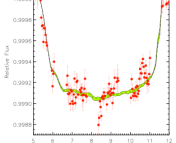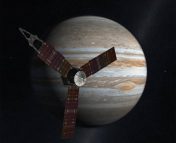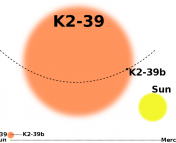Title: In the Presence of a Wrecking Ball: Orbital Stability in the HR 5183 System
Authors: Stephen R. Kane and Sarah Blunt
First Author’s Institution: Department of Earth and Planetary Sciences, University of California, Riverside, California, USA
Status: Published in The Astronomical Journal [open access]
Radial velocities and the HR 5183 system
The exoplanet field is no stranger to observational biases that affect which types of planets are likely be found. Radial velocity (RV) surveys detect planets spectroscopically by measuring the periodic wobble of a star due to a planet’s gravitational influence. The RV method was the first to detect exoplanets around main-sequence stars and detected mostly massive, short-period planets. It is difficult to detect longer period planets with RVs because these planets produce smaller signals over a longer timescale.
RV spectrographs are now pushing towards detecting smaller, longer-period planets through improved precision and longer observational baselines (some stars having been observed for decades). There are now several known long-period planets, including curious HR 5183b (orbit shown in Figure 1). This planet has a highly eccentric (non-circular) orbit (e = 0.84), a mass at least roughly 3 times that of Jupiter, and a period of ~75 years, one of the longest known and barely shorter than the 84-year period of Uranus. The combination of a large period and eccentricity results in an outsized dynamical influence, suggesting HR 5183b acts like a wrecking ball, destabilizing many possible orbits for any other bodies in the system. This is quite the complication for the survival of any body in the habitable zone, loosely defined as where liquid water could exist. The authors divide this zone into the more reliable conservative zone and more speculative optimistic zone.
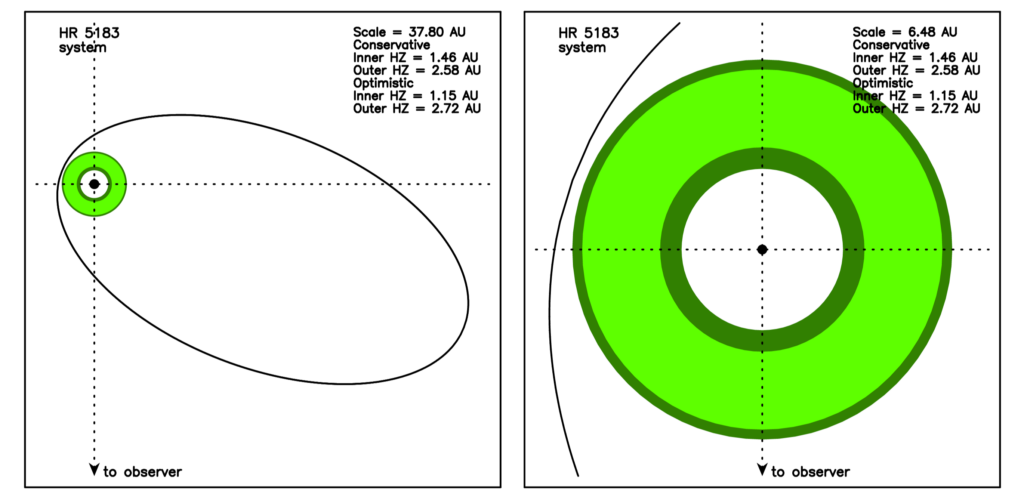
The origin of exoplanet eccentricities is key to probing planet formation and evolution. One proposed mechanism is planet-planet scattering, in which planets interact with each other, altering each other’s orbits by exchanging angular momentum, resulting in orbital disturbances and possibly even the ejection of a planet from the system. The authors suggest planet-planet scattering could explain HR 5183b’s high eccentricity.
Are any habitable zone orbits stable?
While no other planet is known in this system, it is worth considering the dynamical effects of HR 5183b, both to understand potential past interactions that contributed to HR 5183b’s high eccentricity and to probe whether any hypothetical undiscovered planets might be lurking in stable orbits. To address these possibilities, the authors run several N-body simulations with planets initially located at different semi-major axes to test whether a planet with such an orbit could survive over the 108-year run of the simulation (Figure 2).
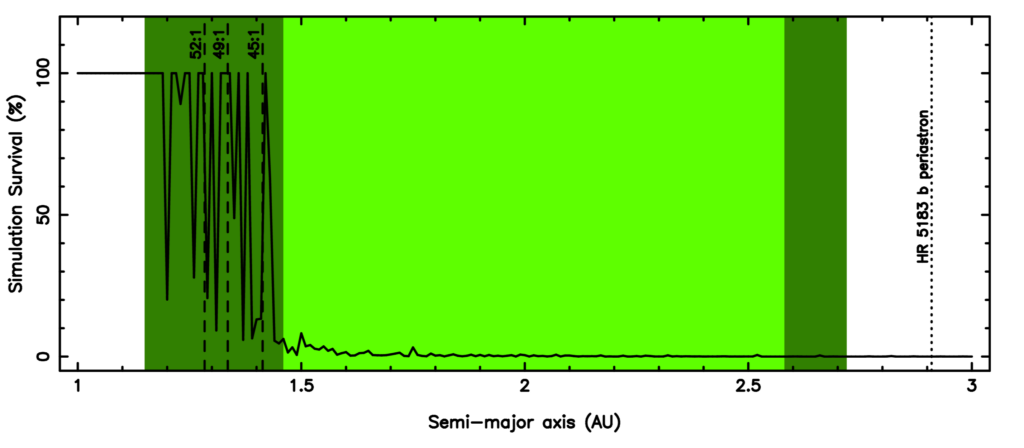
The authors use a time-step of 1.0 day in the simulation and consider a planet’s orbit stable as long as it is neither ejected from the system nor swallowed by the host star. They run the simulation for both one- and five-Earth-mass planets and find similar results, namely that HR 5183b poses a near-existential risk to any planet attempting to survive in the habitable zone of this system. The sole hope for any HR 5183-dwellers is for their home planet to exist within one of the islands of stability in the inner optimistic habitable zone, located in the left-hand dark green rectangle in Figure 2.
How would a hypothetical planet fare?
Now the authors address whether an unknown planet in the habitable zone could exist in this system. Any planet lurking in this system must fulfill two criteria: that the planet’s orbit is dynamically stable and that the RV signal it would produce is smaller than the current threshold for detection. We know from the simulation that such dynamically stable regions (the aforementioned islands of stability), as narrow as they are, do exist. The authors also estimate that at an orbit of 1.4 AU (found to be stable in the simulation) a planet would need to be at least 30 Earth masses to be detected, leaving open the possibility of an undetected terrestrial planet henceforth referred to as planet c.

The authors thus run an additional simulation to understand the effects of HR 5183b on hypothetical planet HR 5183c (an Earth-mass planet orbiting at roughly 1.4 AU) and find that there would be a periodic exchange of angular momentum between planet b and c, leading to variations in planet c’s eccentricity. An unavoidable consequence of such an arrangement is that the stellar flux received by planet c would vary greatly over these cycles, as shown in Figure 3.
The dynamical interactions between planets b and c would cause eccentricity-driven seasonal effects on planet c. To put it mildly, these climatic variations could be harmful to life and in some cases could cause a runaway greenhouse effect. Thus, wrecking ball HR 5183b hits any potentially habitable planets in its system with a real double whammy: destabilizing the majority of habitable zone orbits and causing potentially insurmountable climatic variation in the survivors. I wouldn’t bet on the existence of a habitable planet in such a system, and this paper highlights the importance of considering dynamical effects when searching for habitable planets elsewhere in the universe.
Astrobite edited by Magnus L’Argent and Mark Popinchalk
Featured image credit: NASA

